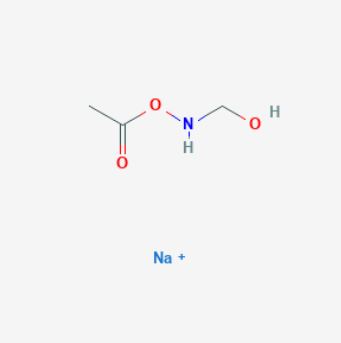Ingredient Spotlight: Sodium Hydroxymethylglycinate - with a little Formaldehyde on the side
Posted by Naturally Safe Cosmetics on 9th Sep 2020
We all know that preservatives are a necessary part of many cosmetic and personal care products. Nobody wants bacteria and mould in their face moisturiser, right? Yuk! The tricky part though, especially for natural and organic brands, is choosing a preservative that will get the job done but is still safe for use on our bodies.
In this article, I take a look at a commonly used preservative known as Sodium Hydroxymethylglycinate.

What is Sodium Hydroxymethylglycinate?
Apart from being a mouthful, Sodium Hydroxymethyglycinate is an antimicrobial preservative derived from the naturally occurring amino acid Glycine. In reality, it is usually produced by reacting synthetic Glycine with Sodium Hydroxide and then formaldehyde. It can be found in all manner of cosmetics and personal care products, including shampoo, body wash and lotions, along with household products like dishwashing liquid and other cleaning products. When it comes to cosmetics, it is not only used by commercial brands but many "natural" brands also use it as an alternative to the traditional paraben preservatives.
Why is it used?
Sodium Hydroxymethylglycinate is a popular ingredient in cosmetics due to its broad-spectrum ability to protect against bacteria, yeast and mould. When added to cosmetics, it slowly releases formaldehyde which kills micro-organisms and prevents the growth of bacteria and other pathogens in products, thereby extending their shelf life.
What concerns are there surrounding the use of Sodium Hydroxymethylglycinate (and formaldehyde) in cosmetics and personal care products?
As mentioned above, Sodium Hydroxymethylglycinate releases formaldehyde when used in cosmetic formulations. Formaldehyde is considered to be a human carcinogen. It has also been associated with organ system toxicity, allergies and skin irritation and is suspected to be an environmental toxin. It is heavily regulated and workplace exposure is restricted to low doses. When it comes to cosmetics, the total content of formaldehyde in the finished product must not exceed 0.2%. Formaldehyde is prohibited for use in products sold in Japan.
Sodium Hydroxymethylglycinate itself is used at very low concentrations in cosmetic products, usually between 0.1-1%. The European Union permits it at concentrations up to 0.5% in products used on humans. When used at this maximum level, the typical levels of free formaldehyde would be 0.118%.
Even at low concentrations, Sodium Hydroxymethylglycinate has been shown to cause skin and eye irritation. It is uncertain whether the allergic contact dermatitis associated with Sodium Hydroxymethylglycinate is caused by the ingredient itself, by the formaldehyde that is released, or both.
Does Naturally Safe Cosmetics stock products with Sodium Hydroxymethylglycinate?
No. Although it is an effective preservative, given the restrictions on its use and the uncertainty surrounding the safety of this ingredient, we've chosen not to stock products that use it in their formulations. In addition, it is not approved by organic certifying bodies like USDA and EcoCert for use in certified organic products.
References: ewg.org/skindeep; chemicaloftheday.squarespace.com; truthinaging.com; pubmed.ncbi.nlm.hih.gov; chemicalsafetyfacts.org; ascc.com.au
Note: The author and Naturally Safe Cosmetics are not health professionals. Any information or advice in this article is of a general nature only and may include the author's own personal opinion. Nothing in this article is intended to diagnose, treat, cure or prevent any disease. For medical advice regarding your own personal circumstances, we recommend you contact your GP or other healthcare professional.


